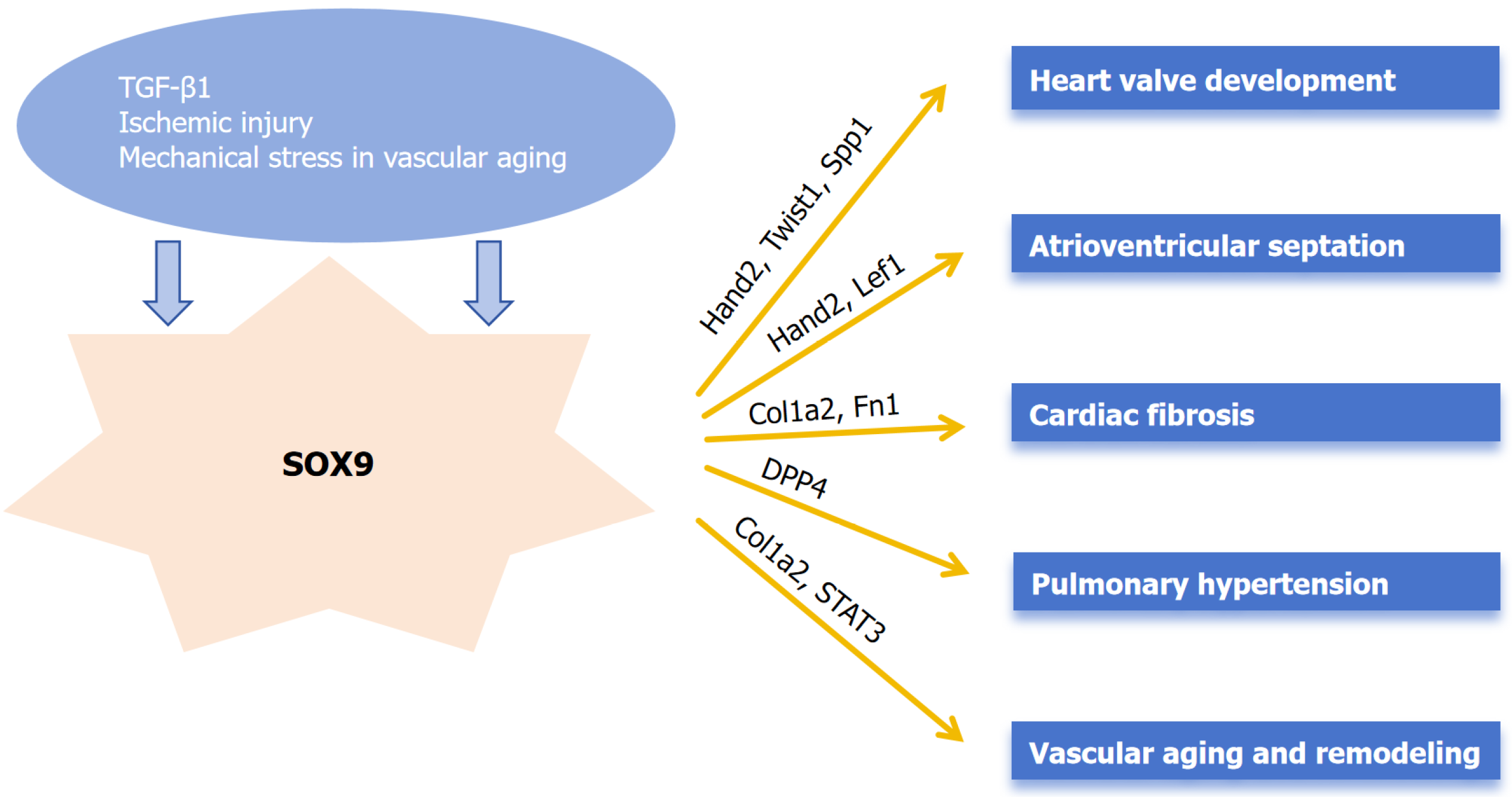Copyright
©The Author(s) 2025.
World J Cardiol. Nov 26, 2025; 17(11): 110339
Published online Nov 26, 2025. doi: 10.4330/wjc.v17.i11.110339
Published online Nov 26, 2025. doi: 10.4330/wjc.v17.i11.110339
Figure 1 SRY-related high-mobility group box 9 regulatory network.
Upstream stimuli including transforming growth factor 1, ischemic injury, and mechanical stress in vascular aging activate SRY-related high-mobility group box 9 (SOX9). SOX9 then exerts its regulatory functions through distinct sets of target genes: It modulates heart valve development via heart and neural crest derivatives expressed 2, Twist family bHLH transcription factor 1, and secreted phosphoprotein 1; participates in atrioventricular septation by regulating heart and neural crest derivatives expressed 2 and lymphoid enhancer binding factor 1; drives cardiac fibrosis through collagen type I alpha 2 and fibronectin 1; contributes to pulmonary hypertension via dipeptidyl peptidase 4; and influences vascular aging and remodeling by acting on collagen type I alpha 2 and signal transducer and activator of transcription 3. These pathways highlight the central role of SOX9 in multiple cardiovascular physiological and pathological processes. TGF-β1: Transforming growth factor 1; Hand2: Heart and neural crest derivatives expressed 2; Twist1: Twist family bHLH transcription factor 1; Spp1: Secreted phosphoprotein 1; Hand2: Heart and neural crest derivatives expressed 2; Lef1: Lymphoid enhancer binding factor 1; Col1a2: Collagen type I alpha 2; Fn1: Fibronectin 1; DPP4: Dipeptidyl peptidase 4; STAT3: Signal transducer and activator of transcription 3.
- Citation: Chadha AN, Cheng H, Yang J. Role of SOX9 in cardiovascular diseases: Evidence today. World J Cardiol 2025; 17(11): 110339
- URL: https://www.wjgnet.com/1949-8462/full/v17/i11/110339.htm
- DOI: https://dx.doi.org/10.4330/wjc.v17.i11.110339













